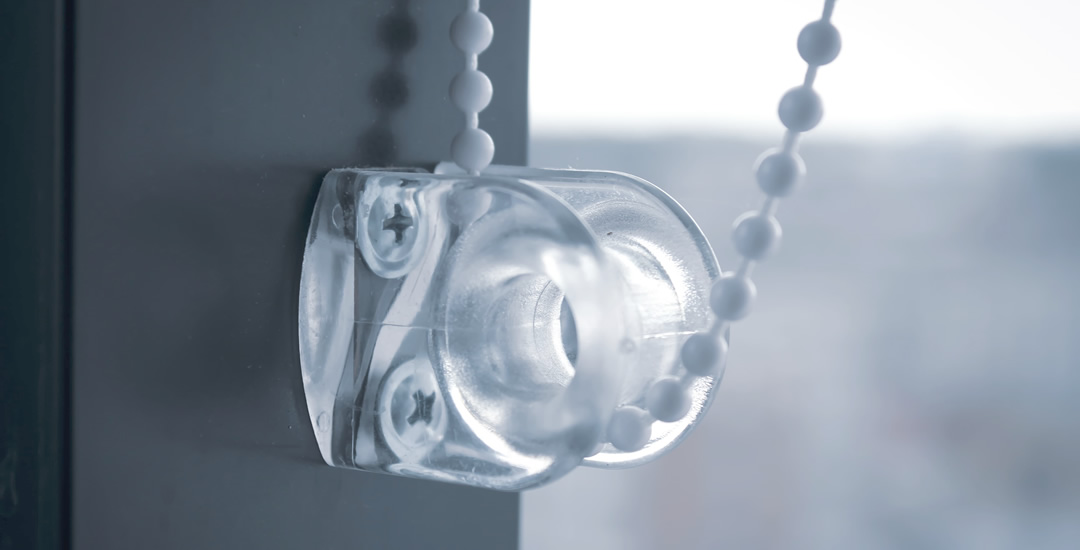
Everyone’s children have their own unique gifts and talents, but one skill that the majority of kids all share is the ability to get themselves into hot water in even the most innocuous of places, which is a large part of what makes being a parent so completely exhausting.
This blog post is designed to provide some simple safety information for parents who are considering buying new window blinds, covering the most important things you need to know about how to choose and fit new window blinds safely.
However, there are a great many different types of window blinds on the market as well as a lot of different facets of child safety to consider; and so this post will serve as a quick-and-dirty introductory primer to get you started in knowing what to look for when it comes to child-safe blinds.
If, on the other hand, you’ve already got window blinds and want to make sure they’re child-safe or if there’s anything you need to do to bring them up to the latest iteration of the British Standard, please check out our accompanying blog post, “How to tell if older window blinds are child safe (and why they might not be)” as well.
In future blog posts we’ll look individually at some of the most common and popular types of window blinds, and examine how well suited they are for use in a child’s bedroom, how to make them child-safe, and cover some other specific areas of child safety and window blinds in more detail too.
We’ll even look at things from the other end of the telescope, which might be far more useful for some of you; covering how to protect your smart new blinds from your finger painting child, and other common issues as well!
Choosing new window blinds that are child-safe

If you’re in the market for new blinds and you’re in the UK, the good news is that finding child-safe window blinds is not too much of a challenge.
All you need to do is ensure that the blinds you choose are compliant with the British Standard/European Child Safety Directive EN13120, and that they’re fitted according to the manufacturer’s instructions, including the integration or fitting of any relevant safety features.
When you buy blinds from a reputable retailer here in the UK, meeting the relevant safety standard should be a given; but do just double-check before you order. Child safety information for window blinds and details on their compliance with the relevant standards should be easy to check on the product page in question.
If you’re ordering blinds from abroad (and beware that this isn’t always obvious, and manufacturers in other countries often go to great lengths to appear as if they’re based here in the UK) then you need to be a little more cautious.
Goods offered for sale to the UK market should theoretically meet all of our relevant safety standards; but whether or not this is the case, and how well (or otherwise) a manufacturer outside of the UK (and particularly outside of the EU) adheres to this and the level of comeback you’d have if something went wrong can be highly variable.
Fitting new window blinds to be child-safe

Buying new window blinds that are child-safe by design is vital to protect your kids from themselves, but this is only half the story. How you fit them, and the wider context of the things around them are the other half, and this is down to you.
Putting up your own window blinds isn’t the dark art that many blinds manufacturers would have you believe; and with a few basic tools, some patience, and the ability to follow simple instructions, literally anyone can fit their own window blinds; even if this is your first punt into the world of DIY.
Fitting blinds in a child-safe way is built into the instructions of safety-compliant blinds, but just in case (and when it comes to accounting for external factors too) tack this list onto the bottom of your directions and ensure that how you fit your blinds ticks all of the boxes when you’re done.
- If there’s a cord or chain attached to operate your blind, keep it as short as is appropriate to allow it to do its job; you don’t need several additional feet trailing down just in case your window suddenly grows a couple of feet taller overnight!
- Keep any chain or cord out of reach of children, by installing the appropriate fixings or safety devices; this will often be as simple as a cleat to wrap the excess length of the cord around, rather than something fancy or complicated.
- Cords, chains, tapes, or anything else of this type should always be tied a minimum of 150cm off the ground. You should also have a quick recce of the furniture dotted around your windows too, to ensure that a chair, storage box, or something else won’t be able to serve as a handy step to let your toddler’s sticky paws get within grasping distance of the cord.
- Don’t tie cords together or knot the bottom of chains; or otherwise allow them to form a loop without a breakaway that a child could hang themselves up on.
- Always read the instructions for fitting your blinds before you begin (even if you’re super-good at DIY and consider it as a personal insult that you might need to follow instructions) and fit them according to the directions.
- Always fit any safety devices (like cleats or p-clips to hold loose cords, or breakaway mechanisms within cords and chains) as well.
Once you’ve done the main part of the work and got your awesome new blinds up and functional, it can be tempting to grab a beer, sit down to admire your work, and call it good; but you’re not done until your blinds are safe, so don’t fall at the final hurdle.
Where to get help and advice on fitting window blinds for child safety
Finally, if you’re having any problems with the fitting instructions, think something doesn’t look right, or are otherwise unsure about things, ask the supplier or manufacturer for advice.
Nobody is more invested in child safety when it comes to their own products than the company responsible for them, and believe me, we and every other blinds retailer and manufacturer in the UK field many calls and emails about child safety every single week.
When it comes to child safety, there is no daft question, and we’d far rather you ask!
We’re not going to judge you. Promise.




